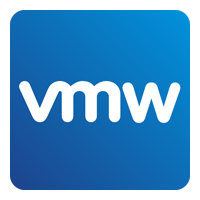
Image: ImageFlow/Adobe Stock
Network segmentation lets IT break their networks into more secure and manageable segments. Here are the best network segmentation tools to help you get started.
Network segmentation tools empower organizations to enhance their network security by dividing their networks into smaller, more manageable segments. As a result, it becomes more difficult for attackers to gain access to sensitive data or disrupt critical systems.
Network segmentation software also improves network performance by reducing congestion and optimizing traffic flow. By segmenting networks, organizations can reduce the risk of data breaches and cyberattacks while maximizing the efficiency of their IT operations.
Here are our picks for the top network segmentation tools for 2023:
Below is a comparison table showing the key features and notable traits of top network segmentation tools. This table aims to provide you with a comprehensive overview of each tool’s capabilities, allowing you to make an informed decision based on your organization’s specific requirements.
| Microsegmentation | Traffic monitoring | Auditing | Unique features | Integration | Ease of use | |
|---|---|---|---|---|---|---|
| Tufin | Advanced | Comprehensive | Robust | • Advanced policy analytics • Security change automation | Extensive | Moderate |
| VMware NSX | Integrated with VMWare ecosystem | Extensive | Integrated with VMware tools | • Distributed firewall management • Microsegmentation for containers | VMware Ecosystem. Limited third-party integrations | Moderate |
| Illumio | Robust, with real-time application dependency mapping | Detailed | Comprehensive | • Real-time application dependency mapping • Threat visualization | Extensive but does not integrate well with some SIEM and SOAR platforms | Easy |
| AlgoSec | Supported | Yes | Robust, with in-depth compliance reporting | • Application-centric policy management • Change impact analysis | Limited integrations with firewall vendors | Easy |
| Akamai Guardicore Segmentation | Strong, plus automation | In-depth | Comprehensive | • Automated microsegmentation • Threat intelligence integration | Extensive | Moderate |
| Cisco Secure Workload | Robust | Yes | Comprehensive | • Zero Trust Network Access (ZTNA) • Cisco Tetration analytics | Extensive | Easy |
| Check Point CloudGuard Network Security | Supported | Yes | Comprehensive | • Cloud-native threat prevention • Advanced threat intelligence | Limited third-party integrations | Moderate |
Jump to:

Best for organizations with complex network environments.
Tufin provides an extensive array of automation and compliance capabilities aimed at simplifying network security management. It allows teams to successfully oversee both segmentation and microsegmentation. This is achieved by either utilizing predefined templates or crafting customized policies within a zone-to-zone matrix that spans their entire network infrastructure.
With Tufin, organizations can seamlessly enforce their corporate security policies, meet compliance mandates, and uphold industry best practices. It not only identifies and resolves existing security policy violations but also safeguards against the introduction of new violations. Tufin offers the flexibility to perform network segmentation across a spectrum of technologies, including legacy firewalls, next-generation firewalls, SDN, and public cloud, all through a centralized console.

Best for implementing granular microsegmentation policies.
VMWare NSX protects workloads and environments with stateful Layer 7 controls, granular microsegmentation protection, and simplified management. It utilizes a software-defined approach to networking that spans data centers, clouds, and application frameworks.
NSX brings networking and security closer to the application, regardless of where it is running, from virtual machines (VMs) to containers to physical servers. This allows organizations to enforce consistent network security policies on any workload hosted anywhere. NSX does this by delivering a software-defined networking (SDN) platform that abstracts the underlying physical infrastructure from the applications. This lets organizations create and manage networks more flexibly.
NSX also provides several security features, such as microsegmentation and network access control, that help organizations protect their applications and data.

Best for hybrid or multi-cloud environments.
Illumio is a zero trust segmentation platform that helps organizations protect their data and applications from cyberattacks by using a microsegmentation approach to segment workloads down to the individual VM or container level. Through this strategy, it gives a much finer-grained level of control than traditional network segmentation methods.
Illumio is a cloud-native platform that differs from its competitors in several ways. First, it is designed to be easy to use and manage, even for non-security professionals. Second, it offers precise network traffic management, which helps to mitigate data breaches. Third, it is scalable and can be deployed in a variety of environments, including on-premises, in the cloud, or in a hybrid environment.

Best for organizations with very large data centers and a high volume of users and workloads.
The AlgoSec platform uses intelligent automation to deploy network security policies that support business application connectivity across the entire hybrid network, including the cloud, SDN, and on-premises network. It uses its unique IP technology to complete the security picture by listening to the network, associating firewall rules with specific applications, and preventing compliance violations.
AlgoSec also connects with many traditional and next-generation firewalls and cloud security controls, as well as routers, load balancers, and web proxies. It offers a number of exclusive features that set it apart from its competitors, such as intent-based segmentation, continuous compliance, and automated policy enforcement.

Best for supporting both legacy systems to modern OSs.
Akamai Guardicore Segmentation is a software-based microsegmentation solution that employs precise segmentation policies, activity visualization, and network security alerts. It is compatible with data centers, multi-cloud environments, and endpoints, offering a faster deployment compared to traditional infrastructure segmentation methods while delivering extensive network visibility and control.
This network segmentation tool uses different methods to gather detailed information about an organization’s IT infrastructure, including agent-based sensors, network-based data collectors, virtual private cloud flow logs from cloud providers, and integrations supporting agentless functionality. This data is then enriched through a flexible and highly automated labeling process, which includes connecting with existing data sources such as orchestration systems and configuration management databases.
Akamai Guardicore Segmentation supports a wide range of systems, from legacy systems like Windows 7, 2000, and 8, to modern operating systems like Kubernetes (K8s).

Best for organizations looking for holistic workload protection for multi-cloud data centers.
Cisco Secure Workload (formerly Tetration) is a zero-trust microsegmentation solution that protects workloads across any environment from a single console. With comprehensive visibility and AI/ML-driven automation, it reduces the attack surface by preventing lateral movement, identifying workload behavior anomalies, helping to rapidly remediate threats, and continuously monitoring compliance.
Secure Workload helps organizations secure their application landscape by creating a micro-perimeter at the workload level across the entire infrastructure, whether applications are deployed on bare-metal servers, VMs, or containers. It also enables businesses to maintain compliance with regulations such as PCI DSS and HIPAA by giving visibility into and control over access to sensitive data.

Best for enterprises with extensive cloud deployments.
CloudGuard Cloud Network Security is a main component of the CloudGuard Cloud Native Security platform. It performs advanced threat prevention and automated cloud network security via a virtual security gateway. This tool enables administrators to enforce network segmentation policies, which strengthens security and compliance by managing traffic within cloud infrastructures.
CloudGuard goes beyond the native microsegmentation and elastic networking features of cloud environments. It dynamically provides advanced security and consistent policy enforcement that seamlessly adapts to the scaling needs of the cloud. With CloudGuard, organizations can protect their workloads and applications in both hybrid and public cloud setups, effectively reducing risks associated with breaches, data leaks, and zero-day threats.
When evaluating network segmentation tools, there are a variety of features that should be considered, including policy management, traffic monitoring, automation, microsegmentation, and auditing.
Having policy management control features allows network administrators to define and enforce precise rules governing communication between network segments. This is crucial because it helps to minimize the attack surface by permitting only necessary traffic and blocking unauthorized or potentially malicious communication. It also ensures compliance with security policies and regulatory requirements.
Network segmentation software should show real-time visibility into network traffic, facilitating quick detection and response to anomalies and security incidents. This visibility lets administrators identify potential threats, such as unauthorized access or unusual behavior, that may signal an attack or breach. With traffic monitoring and analysis capabilities, network segmentation software supports organizations in protecting their networks from a variety of threats.
Automation is another essential feature because it enhances the security and efficiency of network segmentation. It can fine-tune policy management and enforcement, reduce the risk of human error, and guarantee consistent enforcement. In addition, it enables IT security teams to respond faster to security incidents and changing network demands.
Modern network segmentation tools consider microsegmentation a pivotal feature. This capability brings granular control over network traffic flows and empowers administrators to define precise policies governing communication, port access, and protocol permissions, all under specific conditions. This heightened level of control increases visibility into network traffic behaviors and expedites the identification of anomalies and unauthorized access attempts.
Microsegmentation elevates security measures, aligns seamlessly with the zero-trust model, ensures compliance adherence, and prioritizes application-centric security. For organizations seeking to fortify their network security in the face of ever-evolving cyber threats, this feature is invaluable.
Auditing functionality forms a fundamental layer within network segmentation implementations. It contributes significantly to reinforcing both security and accountability, ultimately upgrading the overall effectiveness of network segmentation strategies.
This feature serves multiple functions:
Selecting the best-suited network segmentation tool for your business involves a thorough evaluation process, where various factors like features, scalability, and integration need careful consideration.
First and foremost, you should begin with business-specific requirements. Understanding the unique needs of your organization is essential.
For example, if you operate in the healthcare industry with a wide array of networked medical devices, you may want to seek network segmentation tools with microsegmentation capabilities. This enables you to isolate these devices into their secure network segments, preventing unauthorized access or tampering.
Also consider software with reliable auditing and reporting capabilities to demonstrate compliance with HIPAA regulations.
Businesses in every industry require scalability and flexibility. As your organization grows, your network segmentation tools should grow with it. Look for cloud-based solutions with scalability advantages, allowing you to easily expand or contract your network segmentation as needed.
In industries like manufacturing, where IoT devices are common, ensure that the software can securely accommodate a growing number of endpoints. Additionally, seek tools that support dynamic segmentation, allowing you to adjust access policies based on changing network conditions and user requirements.
Ensure that your chosen solution seamlessly integrates with your existing IT infrastructure. For example, businesses in the financial services field should choose a network segmentation tool that integrates with SIEM platforms. This centralizes log data and security alerts, allowing quick detection and response to financial cyber threats.
Retail businesses should look for software with POS systems integration to secure transactions and prevent retail payment fraud.
Although cost should never be your primary factor in selecting software for your company, it nevertheless cannot be ignored. Unfortunately, most network segmentation companies do not provide transparent pricing for their tools, so it can be hard to know how to include it in your calculations.
Our recommendation is to narrow your choices down to your top three choices based on other factors, and then reach out to their sales teams for quotes. You can then compare — and, in some cases, negotiate — total costs for each solution.
We created six key categories with specific sub-criteria to assess the top network segmentation software of 2023. These criteria include cost, core features, customer support, ease of use, integrations, and deployment options. Each of these aspects has its own set of subcriteria to get a more comprehensive view of how each software performs.
We then scored each category to calculate the total scores of each solution, and selected the ones that scored the highest.
To ensure the accuracy of our data, we employed a multi-pronged approach:
By taking this approach, we were able to compile a dataset that is both comprehensive, objective, and accurate.
We assessed cost based on subscription options, multiple billing tiers, other pricing options, monthly cost, and availability of free trial and free version.
We evaluated core features offered by each vendor, including microsegmentation, traffic monitoring, automation, policy management, and auditing. Additional features were analyzed as well, like firewalls, VLAN and SDN segmentation, cloud security, network scanning,vulnerability management, and network mapping.
Customer support scores involve available customer support channels, such as live chat, phone, email, active community, comprehensive and updated documentation or knowledge base. The response times were also factored in for this criterion.
We gathered feedback on numerous review platforms to gauge how easy the software is to set up and manage for users of different skill levels.
We thoroughly evaluated each tool’s integration capabilities, focusing on two key aspects: quality and quantity. Regarding quality, we assessed how effectively the tool integrated with essential software categories, such as firewalls, SIEM systems, and SOAR platforms.
We also quantified the number of third-party software solutions each tool integrated with to measure their versatility in accommodating various external systems.
This analysis aimed to determine the tools’ capacity to work with critical software types, so organizations get a glimpse of the most scalable network segmentation solutions.
We conducted a meticulous assessment of each vendor’s deployment options, emphasizing two core dimensions: flexibility and comprehensiveness.
When evaluating flexibility, we examined how well each vendor accommodated a range of deployment preferences, including on-premises, cloud-based, and hybrid solutions. Our focus was on the adaptability of these options to meet diverse organizational needs.
Network segmentation is a security strategy that divides a network into smaller, more manageable segments. This can help to protect sensitive data and infrastructure by limiting the access that attackers have to the network.
By segmenting a network, attackers are only able to access the data and systems within the segment they have penetrated. This can make it much more difficult for them to gain access to sensitive data or critical infrastructure.
Network segmentation can be implemented using a variety of methods, including firewalls, routers, and switches. It is an essential part of any organization’s cybersecurity strategy.
Network segmentation is important because it substantially enhances security, optimizes network performance, aids in regulatory compliance, simplifies network management, and provides scalability for future growth and technology advancements.
The short answer is no — a virtual private network (VPN) does not segment networks. VPNs create a secure connection between two devices over an unsecured network, such as the internet. This can be used to access private networks or to protect your data from being intercepted by third parties.
VPNs and network segmentation are both vital security practices, but they serve different purposes. VPNs are primarily focused on securing communication between two endpoints, while network segmentation is focused on controlling access to a network.
Choosing the best network segmentation tool can have a significant impact on your business by boosting security, reducing the risk of breaches, promoting operational efficiency, and maintaining compliance with regulatory requirements. This important decision directly affects your organization’s ability to protect sensitive data, ensure uninterrupted operations, and uphold customer and stakeholder trust.
To select the most appropriate network segmentation tool for your business, prioritize solutions that meet your specific security and operational requirements, offer robust scalability, integrate seamlessly with existing infrastructure, and fit within your budget. Thoroughly test and evaluate each solution for compatibility, performance, and ease of management.
The right tool, combined with best practices, should improve network security, refine operations, and effectively support your business goals — that’s why businesses today use network segmentation tools for different purposes.
One other approach to cloaking network activity and keeping out attackers is network virtualization. Here are the best network virtualization solutions.
Liz Laurente-Ticong is a tech specialist and multi-niche writer with a decade of experience covering software and technology topics and news. Her work has appeared in TechnologyAdvice.com as well as ghostwritten for a variety of international clients. When not writing, you can find Liz reading and watching historical and investigative documentaries. She is based in the Philippines.

Enterprise Networking Planet aims to educate and assist IT administrators in building strong network infrastructures for their enterprise companies. Enterprise Networking Planet contributors write about relevant and useful topics on the cutting edge of enterprise networking based on years of personal experience in the field.
Property of TechnologyAdvice. © 2025 TechnologyAdvice. All Rights Reserved
Advertiser Disclosure: Some of the products that appear on this site are from companies from which TechnologyAdvice receives compensation. This compensation may impact how and where products appear on this site including, for example, the order in which they appear. TechnologyAdvice does not include all companies or all types of products available in the marketplace.